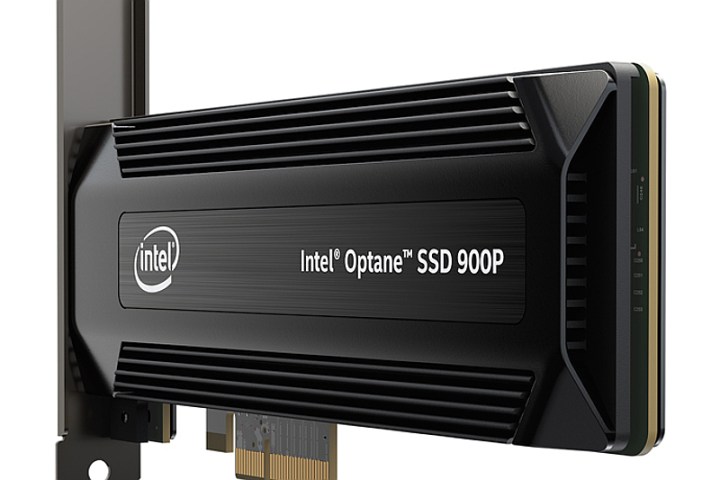
The big deal with Intel’s new Optane technology is that it blends two types of memory together to create one super-fast, high-capacity solution, incorporating volatile and non-volatile memory. Volatile memory is another term for system memory (DRAM) that’s extremely fast but doesn’t retain information when a PC is turned off, nor does it have a high storage capacity. Meanwhile, non-volatile memory (NAND) used in solid state drives isn’t as fast, but is capable of storing data, and provides a high capacity.
Intel’s Optane technology is based on a “3D” crisscross design called XPoint (cross point) that stacks memory layers vertically like a skyscraper for faster access. Every layer includes dozens of columns, each comprised of a single memory cell, its selector, and perpendicular wires mounted above and below to access the memory cell. To modify the memory cell, this design applies voltage changes instead of relying on “bulky” transistors.
Because there are no transistors, Optane technology uses the extra physical space to cram in more storage capacity than your typical system memory stick. But at present you’re still not going to see the same storage capacity found on hard drives due to cost. Intel’s new U.2-based model only serves up 280GB of storage capacity while its two add-in cards provide 280GB and 480GB.
Here are the specifications:
| 900P Add-In Card | 900P U.2 Drive | |
| Max Sequential Read: | 2,500MB/s | 2,500MB/s |
| Max Sequential Write: | 2,000MB/s | 2,000MB/s |
| Max Random Read: | 550,000 IOPS | 550,000 IOPS |
| Max Random Write: | 500,000 IOPS | 500,000 IOPS |
| Storage Capacity: | 280GB / 480GB | 280GB |
| Connection Type: | PCI Express | U.2 connector (SFF-8639) |
| Interface: | PCI Express NVMe 3.0 x4 | PCI Express NVMe 3.0 x4 |
| Form Factor: | Half-Height Half-Length card | 2.5-inch drive |
| Hardware Encryption: | AES 256-bit | AES 256-bit |
| Price: | $389 / $699 | $389 |
What we have to note here is that you’re not getting DRAM speeds with these three Optane-branded storage devices. System memory can push more than 12,000MB/s in read speeds and more than 11,000MB/s in write speeds. We’ve also seen PCI Express-based M.2 SSDs come close to the sequential read numbers shown above in our laptop and stand-alone SSD reviews, but the write numbers in the specifications are impressively high.

But Optane drives have an extremely low latency, and that’s important. They use PCI Express lanes that have direct access to the processor and system memory, which are faster than lanes used by traditional hard drives and solid state disks. That means faster data transfers to and from the storage device.
Available now, the add-in card costs $389 (280GB) and $699 (480GB), and the U.2-based model costs $389. Intel also provides Optane-based “cache sticks” to speed up your hard drive in 16GB and 32GB capacities.


